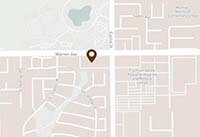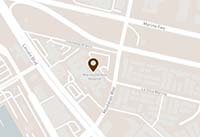To Buy Norvasc Online Visit Our Pharmacy ↓
 Norvasc: Common Side Effects and How to Manage Them
Norvasc: Common Side Effects and How to Manage Them
Understanding Norvasc: What Is It and Its Uses
Norvasc, also known by its generic name amlodipine, is a widely prescribed medication primarily used to treat high blood pressure (hypertension) and chest pain (angina). This calcium channel blocker works by relaxing the blood vessels, allowing blood to flow more easily and the heart to pump more efficiently. Here is a quick breakdown of its primary applications:
| Application | Description | |----------------|-----------------------------------------------------------------------------| | Hypertension | Lowers blood pressure to prevent stroke and heart attacks | | Angina | Relieves chest pain by improving blood flow to the heart muscle |
For individuals with cardiovascular issues, Norvasc is often a critical part of their treatment plan, contributing to overall heart health.
Most Common Side Effects You Might Experience

Norvasc, a commonly prescribed medication for managing high blood pressure and chest pain, can bring along some side effects that users should be aware of. Among the most frequent side effects are swelling in the feet and ankles, dizziness, and a sensation of fatigue. These symptoms can often be mild to moderate but can impact day-to-day activities, making it essential to recognize and address them promptly.
Additionally, some individuals might experience headaches, flushing, or a rapid heartbeat while on Norvasc. These side effects occur as the body adjusts to the medication and might subside over time. However, maintaining open communication with your healthcare provider is crucial to ensure these symptoms do not escalate into something more serious, helping you manage your treatment effectively.
Immediate Reactions: What to Watch Out for
When starting Norvasc, paying attention to how your body responds is crucial. Some individuals might experience symptoms such as dizziness, light-headedness, or swelling in the ankles and feet. These reactions usually occur as your body adjusts to the medication. While mild dizziness and light-headedness are common and typically not a cause for alarm, it's essential to sit or lie down until the feeling passes to prevent falls or injuries.
However, some immediate reactions warrant prompt medical attention. For instance, experiencing shortness of breath, an irregular heartbeat, or severe swelling could indicate a more serious issue. Additionally, allergic reactions such as rash, itching, or swelling of the face and tongue are red flags that require urgent care. Being aware of these symptoms can help you act quickly and ensure your safety while on Norvasc.
Managing Mild Side Effects at Home

When taking Norvasc, you might encounter mild side effects such as dizziness, flushing, or slight swelling of the ankles and feet. Staying hydrated can often mitigate dizziness. Rising slowly from a sitting or lying position can also help prevent light-headedness. For flushing, a cool compress or fan can provide immediate relief. Mild swelling can be managed by elevating your feet when resting and incorporating light physical activities like walking to improve circulation.
Maintaining a balanced diet rich in potassium can also assist in reducing these side effects, as it helps in proper fluid balance. Avoiding excessive salt intake can help manage swelling, and staying active can keep your blood flowing smoothly. If the side effects persist or worsen, consulting with your healthcare provider is advisable.
When to Seek Medical Help for Side Effects
It’s crucial to be aware of any severe side effects associated with Norvasc, as prompt medical intervention can prevent complications. If you experience symptoms such as severe dizziness, fainting, a significant and rapid heartbeat, or swelling in the hands, feet, or ankles, seek immediate medical attention. These reactions may indicate a serious issue that requires swift action to ensure your well-being. Don't hesitate to contact your healthcare provider if you notice unusual symptoms or believe the side effects are worsening.
Below is a table listing common symptoms that may require urgent medical assistance:
| Symptom | Description |
|---|---|
| Severe Dizziness | Feeling extremely lightheaded and unable to stay balanced |
| Fainting | Loss of consciousness or near blackout |
| Rapid Heartbeat | Unusually fast or irregular heart rate |
| Swelling | Noticeable swelling in extremities like hands, feet, or ankles |
Tips for Minimizing Norvasc Side Effects
One effective way to minimize Norvasc side effects is to take the medication at the same time each day, ideally with food to lessen any potential stomach discomfort. Staying well-hydrated can help prevent side effects such as dizziness or lightheadedness. It’s also advisable to avoid alcohol, as it can intensify some side effects. Incorporating a healthy lifestyle, including a balanced diet and regular exercise, can enhance your overall well-being and reduce the likelihood of experiencing adverse effects. Lastly, always consult with your healthcare provider before making any significant changes to your routine.





